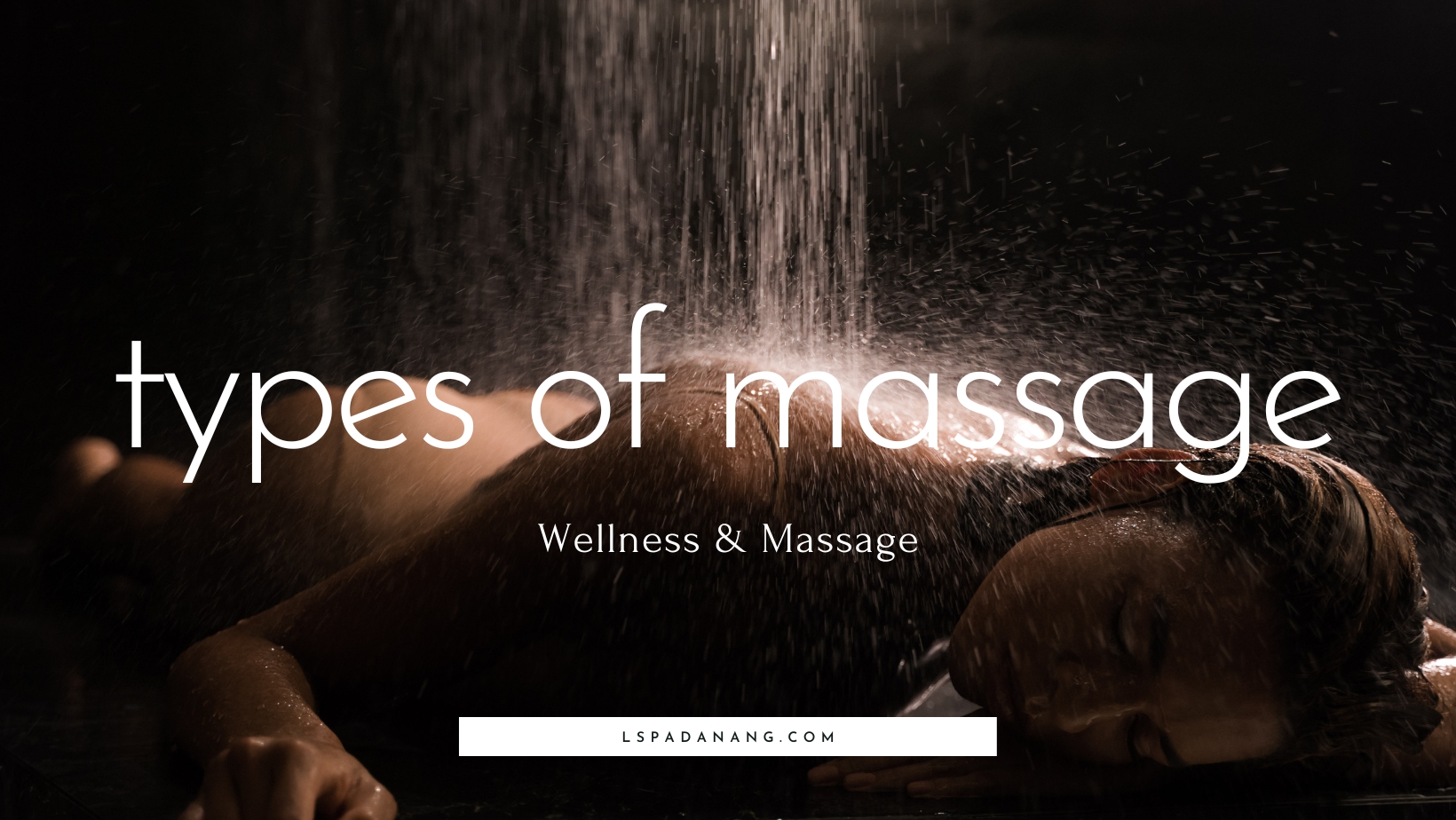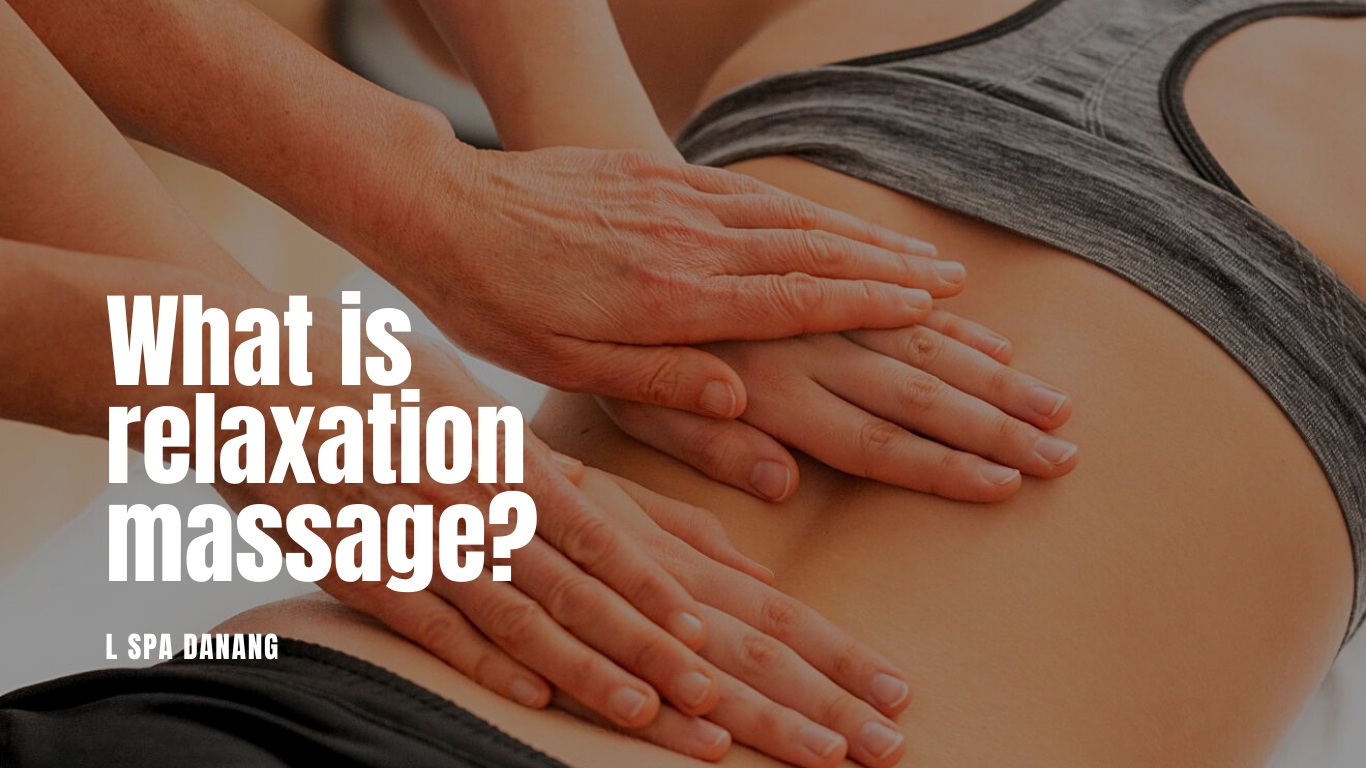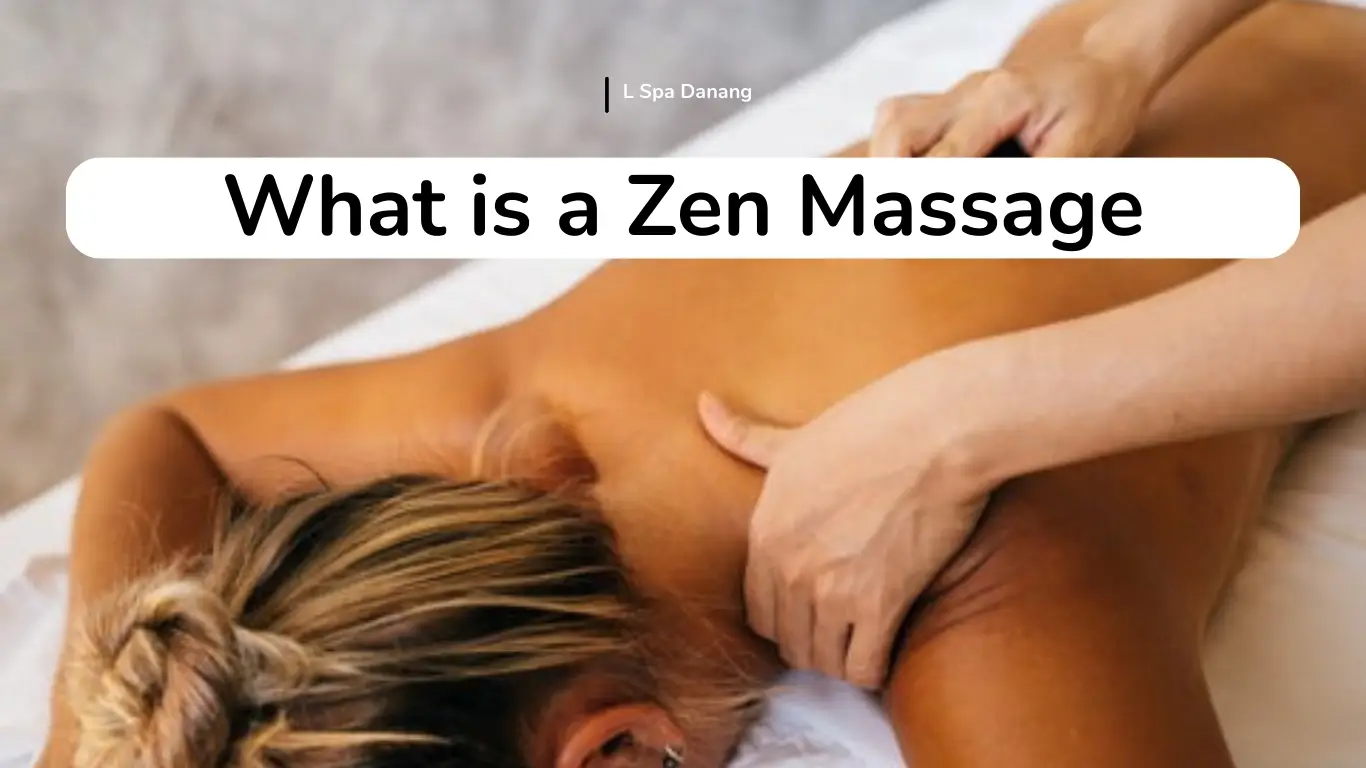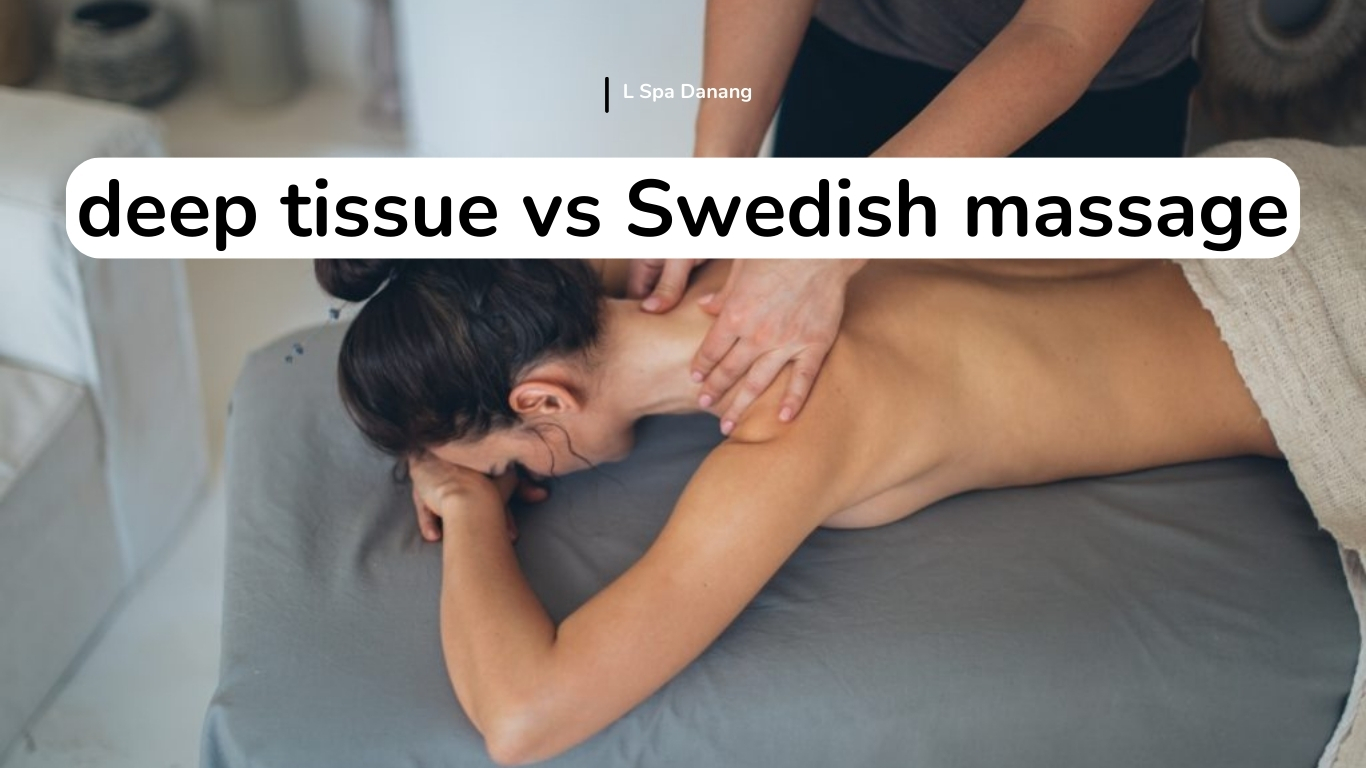Deep tissue massage provides a dual spectrum of advantages, catering to both physical and psychological well-being. By alleviating muscle pain and stiffness, it not only promotes physical relief but also offers a tranquil and stress-relieving experience for both the body and mind. Within this article, we explore the advantages of deep tissue massage, along with 5 best deep tissue massage methods.
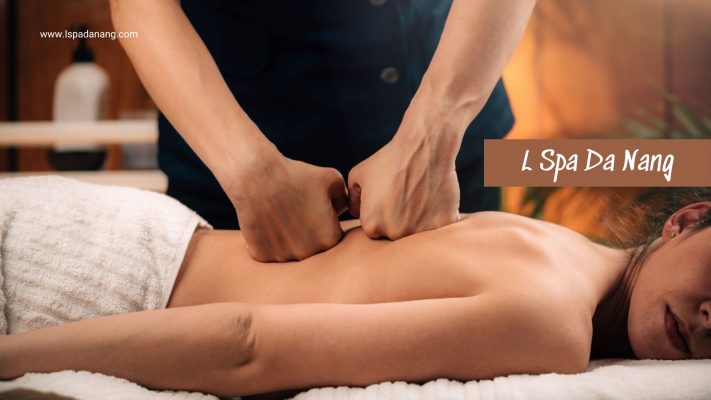
What is a deep tissue massage?
Deep tissue massage provides advantages on both a physical and psychological level. It is effective in alleviating muscle pain and stiffness while fostering relaxation that relieves stress for both the body and mind.
Deep tissue massage could be a fitting choice for addressing sports injuries or chronic back pain. This technique is occasionally regarded as a specific type of therapeutic massage.
Swedish massage vs. Deep tissue massage
Deep tissue massage and Swedish massage represent distinct forms of massage therapy. While they share certain strokes, their applications and the degree of pressure employed differ significantly.
Swedish massage
Swedish massage offers a gentler, more soothing approach to massage. Tailored to induce relaxation throughout the entire body and alleviate stress and tension, this type of massage primarily focuses on the superficial layers of muscles and connective tissues. Employing light to medium-pressure techniques like long strokes, kneading, friction, and tapping a Swedish massage aims to enhance circulation and promote a sense of overall relaxation.
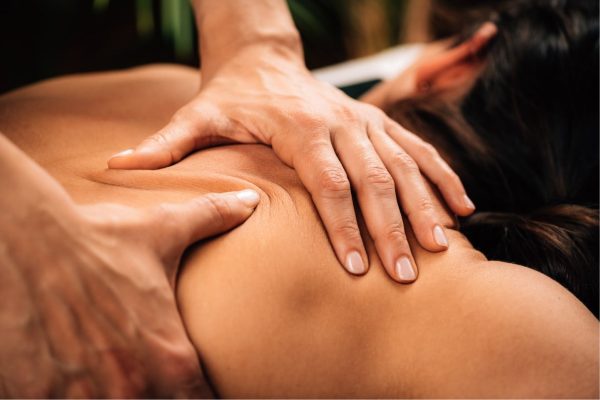
Deep tissue massage
In contrast, deep tissue massage is a more robust form of massage. Employing deep, deliberate strokes and applying substantial pressure, it concentrates on reaching the deeper layers of muscle and fascia. Commonly recommended for individuals experiencing chronic muscle tension or pain, deep tissue massage is frequently employed to address specific areas of the body, including the neck, shoulders, back, and hips.
In general, Swedish massage prioritizes enhancing circulation throughout the muscles and fascia. On the flip side, deep tissue massage sessions zero in on addressing knots within the muscles and deep fascia. Opting for a deep tissue massage session proves beneficial when contending with tightness or pain resulting from a pulled muscle or a previous injury. It serves as an effective remedy for general tension induced by poor posture or an unfavorable workstation.
Benefits of deep tissue massage
Deep tissue massage offers numerous advantages for a range of conditions, including injuries, chronic pain, and specific diseases.
Potential relief for back pain
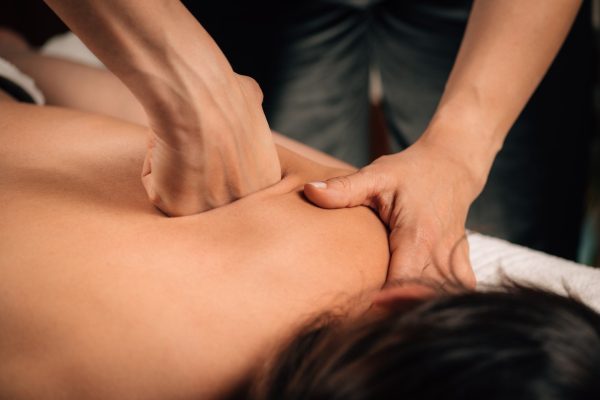
An examination of the impact of deep tissue massage on individuals with ankylosing spondylitis, a type of arthritis, revealed promising results regarding back pain. The study demonstrated that deep-tissue massage led to a significant reduction in pain when compared to therapeutic massage. This suggests that deep tissue massage may offer valuable assistance in alleviating back pain, especially for those dealing with conditions such as ankylosing spondylitis.
Potential for lowering high blood pressure
Studies indicate that sports massage can lead to a decrease in heart rate and high blood pressure. Nonetheless, there is a scarcity of research examining the effects of deep tissue massage on this particular condition. While evidence supports the potential benefits of sports massage in reducing high blood pressure, further research is warranted to explore the specific impacts of deep tissue massage on cardiovascular health.
Facilitating recovery post-Injury
Studies propose that both deep tissue and soft tissue release techniques can contribute to the recovery process following an injury, such as an ankle injury.
Massage may assist in:
- Alleviating pain and stiffness
- Enhancing circulation to diminish swelling or the accumulation of fluid around the injury
- Accelerating the healing of muscle strains and sprains
- Restoring the range of motion
Pregnancy
Deep tissue massage proved effective in diminishing lower back pain for an individual during pregnancy. Furthermore, the massage contributes to an increase in serotonin levels, offering relief from pain in the legs and back. Massage therapy websites additionally propose that deep-tissue massage can play a role in promoting better sleep, enhancing sports performance, and aiding in the breakdown of scar tissue.
5 best deep tissue massage methods
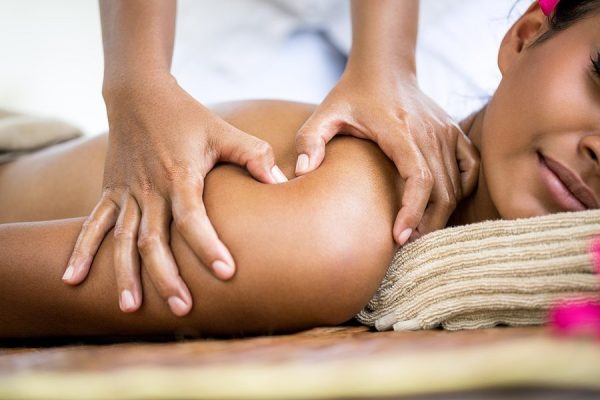
There is a common misconception that effective deep tissue treatments solely involve robust strokes, and the greater the applied compression, the more beneficial the treatment. This assumption is not accurate.
Contrary to this belief, the effectiveness of the treatment is not solely determined by the forcefulness of the strokes or compression. The key lies in the appropriate application of pressure at the correct locations, ensuring a tailored and effective approach to address specific concerns. In addition, applying insufficient pressure may not effectively address the issue, and conversely, excessive force can harm the muscle.
The crucial factor is ensuring an appropriate level of pressure is applied at the correct position. Getting both elements right increases the likelihood of successfully treating the underlying issue. Here are 5 best deep tissue massage methods:
Method 1: Sacrum push
Commencing a full-body deep tissue massage, the Sacrum Push stands out as a simple yet incredibly effective method.
This technique applies a deeply satisfying, warm pressure to the core of the body, targeting the base of the spine and encompassing the entire sacrum area. Experience an almost instant sensation of immense comfort, setting the tone for the remainder of your treatment. This approach is one of the finest ways to initiate a deep tissue routine, particularly when accompanied by carefully measured breathing.
Method 2: Elbow pressure
This method is typically used for alleviating discomfort in the shoulder muscles located on either side of the upper spine near the scapula area.
Ensuring that the force is not applied to bony areas is crucial, as this may cause pain and discomfort. The advantage lies in the therapist’s ability to skillfully enhance the pressure, directing it precisely onto the shoulders, potentially up to their weight. This capability proves beneficial in meeting the needs of even the most discerning customers.
While this technique also involves the utilization of the practitioner’s body weight, the therapist must exercise extra caution. This is because a significant portion of their body weight is concentrated through the small surface area of an elbow tip.
Method 3: Knuckle pressure
In a manner akin to the elbow pressure technique, the knuckle pressure method harnesses joints on the therapist’s body to deliver a more substantial level of force compared to using just the fingertips.
Typically employed when clients require more robust therapy for fleshier areas of the body, such as the buttocks and the backs of thighs.
Method 4: Double finger press
Discussing softer areas of the body, it is widely acknowledged that pressure applied with a padded instrument is more comfortable than that from a sharp or pointy one.
Therefore, it’s unsurprising that individuals typically prefer therapists to use the gentler tips of their fingers instead of the bony corners of elbows and knuckles.
However, due to the inherently more delicate nature of extended fingers compared to joints, exerting significant pressure with fingertip precision can pose a challenge for therapists, particularly those with a slight build.
The double finger press method in deep tissue massage offers an effective solution to this challenge. Employing this technique allows therapists to apply increased force with their fingers without risking damage to their soft tissues.
FAQs
Q1: What is the difference between a deep tissue massage and a regular massage?
While both aim to address a person’s muscles and connective tissue, a full-body massage typically focuses on the larger muscles and tendons in the targeted area. In contrast, a deep tissue massage tends to concentrate on the less conspicuous muscles and connective tissue in a specific area.
Q2: Why deep tissue massage feel so good?
The sensation of goodness during a deep tissue massage can be attributed to the immediate response of your skin’s nerve cells to pressure. When these cells sense pressure, they send signals to the brain, triggering the release of feel-good chemicals known as endorphins. These endorphins not only enhance your mood but also induce a natural sense of euphoria and bliss. Consequently, stress hormones such as cortisol and adrenaline begin to decrease, contributing to an overall feeling of well-being and contentment.
Q3: How often should you get a deep tissue massage?
Deep tissue massage is designed to address muscle damage resulting from injuries. The recommended frequency for seeking such massages varies based on individual needs. Whether it’s a daily, a few times a week, or a few times a month regimen, it depends on the level of pain and the specific health condition prompting this massage technique. It’s advisable to consult with your massage therapist, who can guide the optimal frequency and duration tailored to your underlying health condition.
The bottom line
Deep tissue massage is most beneficial for individuals actively involved in rigorous physical activities like running or those dealing with injuries or chronic pain. If you possess a low pain threshold or seek relief for tense muscles, Swedish massage, being gentler, might be a more suitable choice.
This article is for informative reference and to explain the benefits and uses of Deep Tissue Massage. To learn about our available deep tissue body therapy options and other services, please visit the L Spa Da Nang website.

